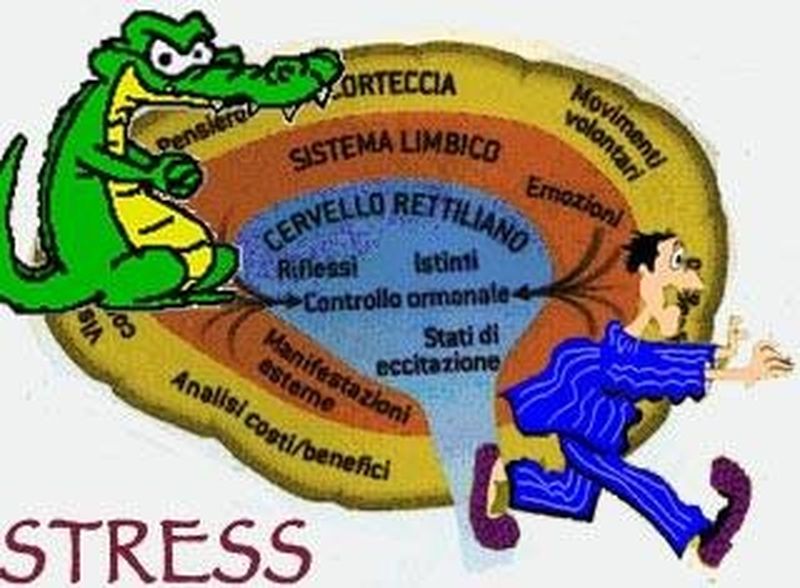The brain … what a stress!
During the seventies the neurologist and neuroscientist Paul Donald MacLean elaborated an evolutionary theory about the brain and its Trinitarian structure, the “Triune Brain”.

Who has never said “what a stress!” ??
Our life is a three-way relationship : our Ego (what we believe we are) our Higher Self (our divine essence) and Stress !
Since it is not possible to live in a stress -free world , our response must reduce the damage.
The reptilian brain , the oldest part, which responds to the primal instincts of attack-flight, offers an effective and ancient response: to move away from the source of stress or to fight it.
The other parts of the brain, then, suggest alternative behaviors to the “physical struggle” that favor the elimination of stress guaranteeing the conservation of the species .
But how is our brain composed? Historically it has been considered in many different ways: the ancient Egyptians considered the brain of little importance; in the Greek world, Hippocrates and other philosophers such as Plato identified the brain as the seat of thought; Aristotle, on the other hand, believed that the heart was the seat of intelligence, and saw the brain only as a mechanism for cooling the blood, heated by the body; Descartes theorizes a division between mind and body, hypothesizing the mind-brain dualism.
During the seventies, however, the neurologist and neuro-scientist Paul Donald MacLean , instead elaborated an evolutionary theory: a Trinitarian structure (“Triune Brain”).
This interpretation, which exercised a great fascination among intellectuals, is that the brain has developed through a process of successive stratifications in which the layers that form it rest on the previous ones without radical structural changes taking place:
> Reptilian brain (brain stem), innermost, is the seat of the primary instincts, of the autonomous bodily functions;
> Mammalian brain (limbic system), represents a progress in the evolution of the nervous system because it is able to develop emotions and adaptive strategies to deal with the environment;
> consciousness (neocortex), outermost, seat of conscious thought and language, develops strategies and new behaviors that allow us to face new and unexpected situations, is associated with self-awareness, the conception of space and time, the concept of causality, of constancy and synchronicity.
The three parts of our brain can coexist in balance but it often happens that there is one part that takes over the others and, due to our past experiences, the three brains are therefore not in balance .
In fact, a real “coup d’etat” can happen, by one of the three that tends to suffocate the others , while the opposite can happen later. It all depends on our lifestyle and the environment in which we are born, grow up and find ourselves living.
It is in fact thanks to the discovery of the frontal lobe, of the ability to acquire new behaviors and new experiences (consciousness), that much of the work should be directed, on the awareness and consequent harmonization of the unexpressed or hypertrophic parts.
Conscience has the difficult role of mother and father of the organism and that of taking responsibility, protecting and giving direction.
If the conscience is narcissistic, the heart and organism are forgotten and the ego prevails .
























+ There are no comments
Add yours